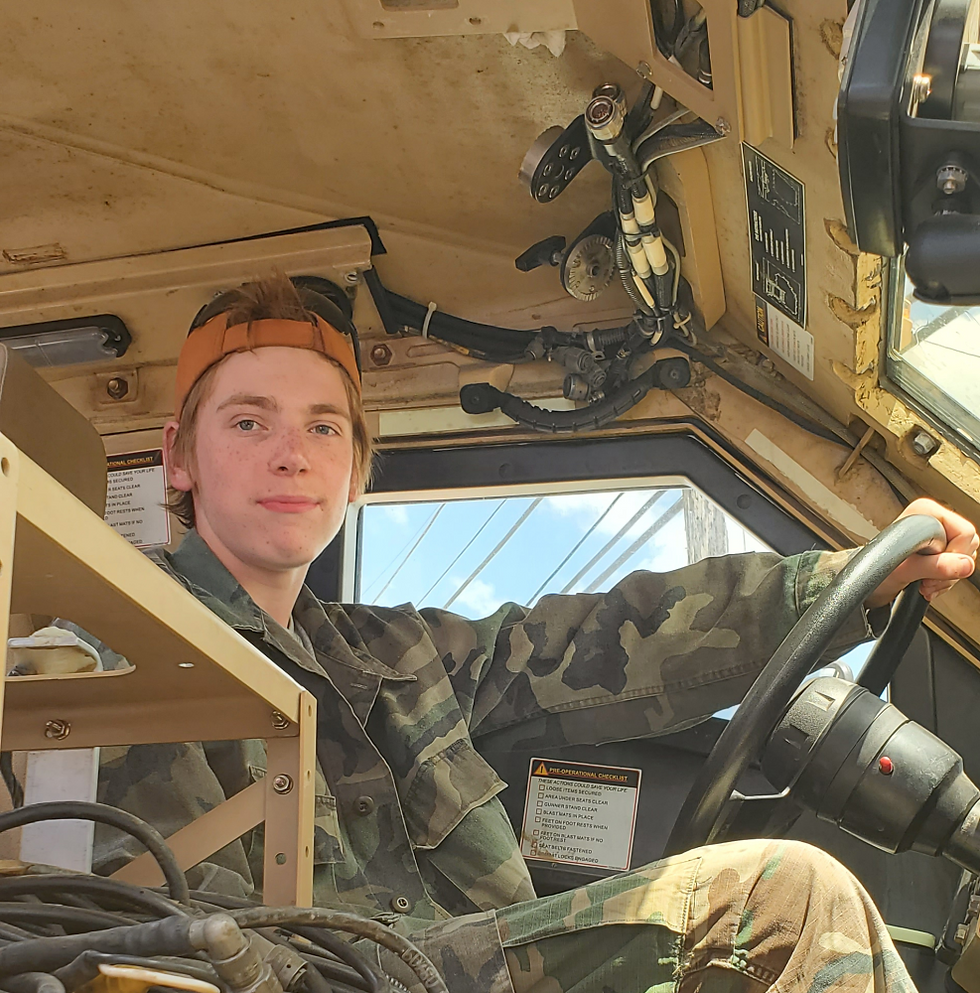It happened here once...
- EG Weiss

- Mar 3, 2023
- 5 min read
In its glory days, the city of Cahokia covered more than six square miles around what is now the city of St. Louis. The amazing metropolis boasted structures that were more than ten stories high and Cahokians roamed North America from the Great Lakes to the Gulf of Mexico.

As I stood on what appeared to be a temple mound, I was awestruck at the view of St. Louis across the river but I was more perplexed than amazed. What had become of these people? Why was nothing left but this temple site?
The mound on which I stood is called Monks Mound which is the largest structure in Cahokia. It is a massive man-made earthen mound with four terraces. It is ten stories tall and the largest earthen mound north of Mexico. Having the 100 foot advantage point gives you a spectacular view, but no insight as to what happened here on the Illinois shore of the Mississippi River.
At one point, long before our country was “discovered”, Cahokia was a thriving place to live but suddenly, around 1350, the Cahokians disappeared.

Cahokia was a sophisticated and cosmopolitan city for its time. Yet its history is virtually unknown by most Americans and present-day Illinoisans. I certainly had no idea this place ever existed and I had been born and raised in Illinois! One theory as to why Cahokia has never made it to main stream historical teaching is that Cahokia just does not fit the narrative of the savage North American tribes running naked through the trees and living in primitive huts or caves. The Cahokians were the opposite of that and were far from primitive.
Anthropologists speculate that the raising of Cahokia had taken years of civil planning and engineering and that this alone proves that this was no deep-woods tribe of hunter-gatherers with no sense of science or development.
Imagine Cahokia as more of a modern day St. Louis. Evidence shows that Cahokia was drawing new residents all the time and from many other tribes (or ethnic groups) such as Natchez, the Pensacola, the Choctaw, the Ofo. Archaeologists conducting strontium tests on the teeth of buried remains have found a third of the population was not from Cahokia, but somewhere else. It was truly a diverse society that attracted people from everywhere. Cahokia was a destination.
The Native Americans at Cahokia farmed, traded and hunted. They were also early urban planners, who used astronomical alignments to lay out a low-scale metropolis of 10-20,000 people, featuring a town center with broad public plazas and key buildings set atop vast, hand-built earthen mounds.
But then the story takes a turn that can only feed our speculation and creates an opening for us in emergency to start using the Cahokians as a parable rather than an historical account.
This booming major population center, perhaps the largest in North America at the time, suddenly, without apparent warning, is abandoned. By 1350 the midwestern winds of autumn scatter leaves across an empty mound and the grass has reclaimed much of what was once the first St. Louis.
Cahokia sat in this state when Spanish explorer Hernando de Soto came to these lands in 1540.
While “Atlantis-type” theories abound as to what happened to the Cahokians and their city, I hold to one of my own which seems to align with a majority of archeologists and anthropologists that have studied theses early city builders.
With the Mississippi River in their front yard, there was certainly no shortage of food and the fertile lands surrounding the city brought forth healthy crops of beans, squash and corn along with fantastic hunting opportunities that exist still today throughout the area. It is obvious that Cahokia was a destination and evidence shows that mass-pilgrimages took place bring thousands of tourists for religious ceremonies and celebrations so trade was no issue. Supplies were in abundance.
Excavations only began in 1961 but there has been some information that has risen to the surface of early findings.
Mass burials with no apparent explanation. While there is some evidence that the society carried out human sacrifice as part of their religion, I believe there is enough evidence to propose that the Cahokians were possibly attempting to advance health care through surgeries as well. If true, there is still no explanation for the true number of bodies buried at Cahokia that appear top have died within a short time frame.
To suggest war would be logical except that unlike almost every other native American burial site in the world, there are no arrowheads, no weapons and no sign of conflict.

The story of Cahokia’s decline and eventual end may forever be a mystery. Certainly the answers will not expose themselves in my lifetime or yours. To stand atop Monk’s Mound is to discover that natural resources continue to abound and that there must be some catastrophic event that took these people off the map.
A majority of archeologists, anthropologists and scientists studying Cahokia have all come to the same conclusion.
The city of Cahokia did not worry about war on its own soil and so, as evidence shows, did very little to fortify the city creating a soft target should an invading force ever approach.
Content in their peaceful and comfortable existence, the mounds were built for religious purposes but topographically there was no place for the population to go when the Mississippi left its banks as we know it do even today.
The theory involves a cascading lists of one disaster after another. Political and social unrest may have permeated the atmosphere of Cahokia as it grew and government became more mature and advanced. The Midwest climate is not kind to today’s technology let alone those living in the year 1200 so imagine the effects of massive Mississippi flooding, the New Madrid earthquake fault line, extended droughts, horrific heat waves, massive tornado outbreaks and severe winter vortexes with sub-zero temperatures.
One only has to visit with the Emergency Management office in St. Louis today to find out why the Cahokians no longer exist.
When asked why Cahokia is not included in Native American folklore and oral histories, University of Illinois Anthropologist Thomas Emerson replied, “Apparently what happened in Cahokia left a bad taste in people’s minds.”

I think he is right. We really do not want to think about this. It is hard enough to eat the bite-size disasters let alone the full bag of assorted catastrophes that lurk in our history and could reoccur any moment.
About 250,000 people visit Cahokia per year. Not enough of them are Emergency Managers.
On top of a ten story mound, just a few miles from the edge of the Mississippi River is the opportunity to stand and reflect, to consider and to resolve.
It happened here once…



Comments